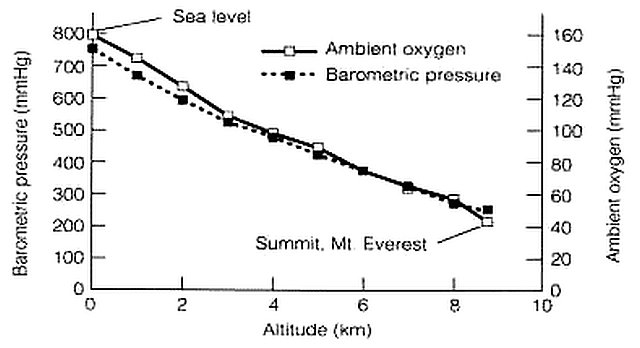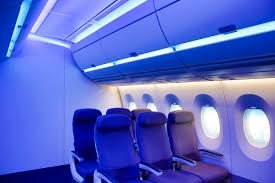What to expect when flying
UPDATED FROM SFHealth
DAY 5

Welcome aboard Steem-jetters ,we the Steemjet health department would like to welcome on board all spaceforce(s)
we have been informed of several health (inflight) issues and would want to address that.
What to expect when flying
There are several inflight stresses that should be expected especially for those with an unstable health status .
Inflight stresses include : Lowered barometric and oxygen pressure , noise and vibration ( including turbulence) , cigarette smoking , erratic temperature , low humidity ,jet lag and cramped seating .There is always potentials that some passengers ,particularly those with unstable illness , may become ill during flight or post flight due to these stresses .

image source
Lowered barometric and oxygen pressure click here for more information
Noise and vibration

image source
How do our ears work?
Our ears enable us to hear sounds, which are actually vibrations in the air. These vibrations travel through the ear canal to a thin membrane called the eardrum, which also hermetically seals the ear canal from within. On the other side of the eardrum is a tube called the Eustachian tube, which runs from the inner ear to the back of our nose/throat, where it can vent to the air outside. This tube allows air to flow to or from the inner ear, depending on whether the pressure in the inner ear is higher or lower than ambient air pressure. An obvious precondition is that the Eustachian tube cannot be blocked! This can happen, for example, if it is obstructed by mucus or inflammation due to a cold, hay fever or perhaps a respiratory infection.
If you are suffering from a cold or hay fever, the mucous membrane in the Eustachian tube can become swollen and impede the flow of air through it. Consequently, when the aircraft is descending the air pressure behind the eardrum, in the inner ear, will remain too low and will not be able to counteract the increasing cabin air pressure that is pushing the eardrums inwards. Initially you will feel this as pressure and later as pain. Furthermore, because the eardrum will be under constant pressure, it will no longer be able to vibrate freely. So you won’t be able to hear properly either.
These are few ways to avoid ear problems
Swallowing and yawning opens the Eustachian tube so that air will be able to reach the inner ear during descent.
Even if you keep having problems long after the landing, it will still help when you keep swallowing.
Blowing your nose
Chewing gum, or
Drinking while pinching your nose closed.
Any of these methods that works for you should be repeated a few times during the complete descent. All these methods is referred to as “coping”. Air is more likely to flow up the Eustachian tube if you swallow, yawn or chew.
You can as well try this
Breathe in, then gently breathe out with your mouth closed while pinching your nose (it’s known as the Valsalva manoeuvre). In this way, no air will be exhaled but you will be gently pushing air into the Eustachian tube. While doing this you may feel your ears go “pop” as air is pushed into the inner ear. This often solves the problem. Repeat the procedure every few minutes while landing or whenever you feel any discomfort in your ears.
Remember you can only try these tips to equalise the pressure either side of your eardrums as long as you are you are awake!!!
ERRATIC TEMPERATURE

image source
How to Stay Cool On Board
YOU can keep cool on board during warm weather by always taking frequent sips from a bottle of cold water and wearing lighter clothing made from breathable fabrics. Traveling with a reusable water bottle that can be filled at a water fountain after passing through security is one economical and hassle-free option.
Passengers who feel overheated should ask a flight attendant for ice wrapped in a towel, which they can then place on their head until they cool down.
All passengers should remember that relief is always in sight. “When a cabin is hot, it will get cool, Sometimes, it’s just a matter of time.”
Air-conditioning is the most obvious way to maintain a comfortable on-board climate, but airline staff will often ask passengers to help as well.
Low humidity and oxygen deprivation
info source
1.) If you are worried about the effects of low oxygen levels in blood because of a pre-existing condition consult your GP before flying.
2.) Put down the gin and tonic. Alcohol exacerbates symptoms as it interferes with your cells' metabolism making them less efficient at absorbing oxygen. It can also cause you to dehydrate faster (more on that below).
3.) Give up smoking. Smoking can deplete oxygen levels by up to eight per cent before you've even boarded the flight. Give yourself and your lungs a fighting chance by ditching tobacco well in advance of your flight.
Jet lag
.jpg)
image source
This is a sleep disorder that can affect those who travel quickly across multiple time zones.
Wikipedia for more information
Maintenance :
.jpg)
image source
So far light is the strongest stimulus for realigning a person's sleep-wake schedule, and careful control of exposure to and avoidance of bright light to the eyes can speed adjustment to a new time zone. [4] The hormone melatonin is produced in dim light and darkness in humans, and it is eliminated by light.
Thanks for your time.

Wonderful... I'll keep this in mind when traveling. Thank you for this awareness.
Am just here not knowing of these precautions, when i travel!!! 🤔🤔.. But am enlighten by you. Thanks @ucathy. I will bear these in mind when travelling on board.. Every part of our body is important and needs to be cherished and not gambled with!!! An intriguing write up!!!. Your post has been re-steemed.
Thanks for the enlightenment.